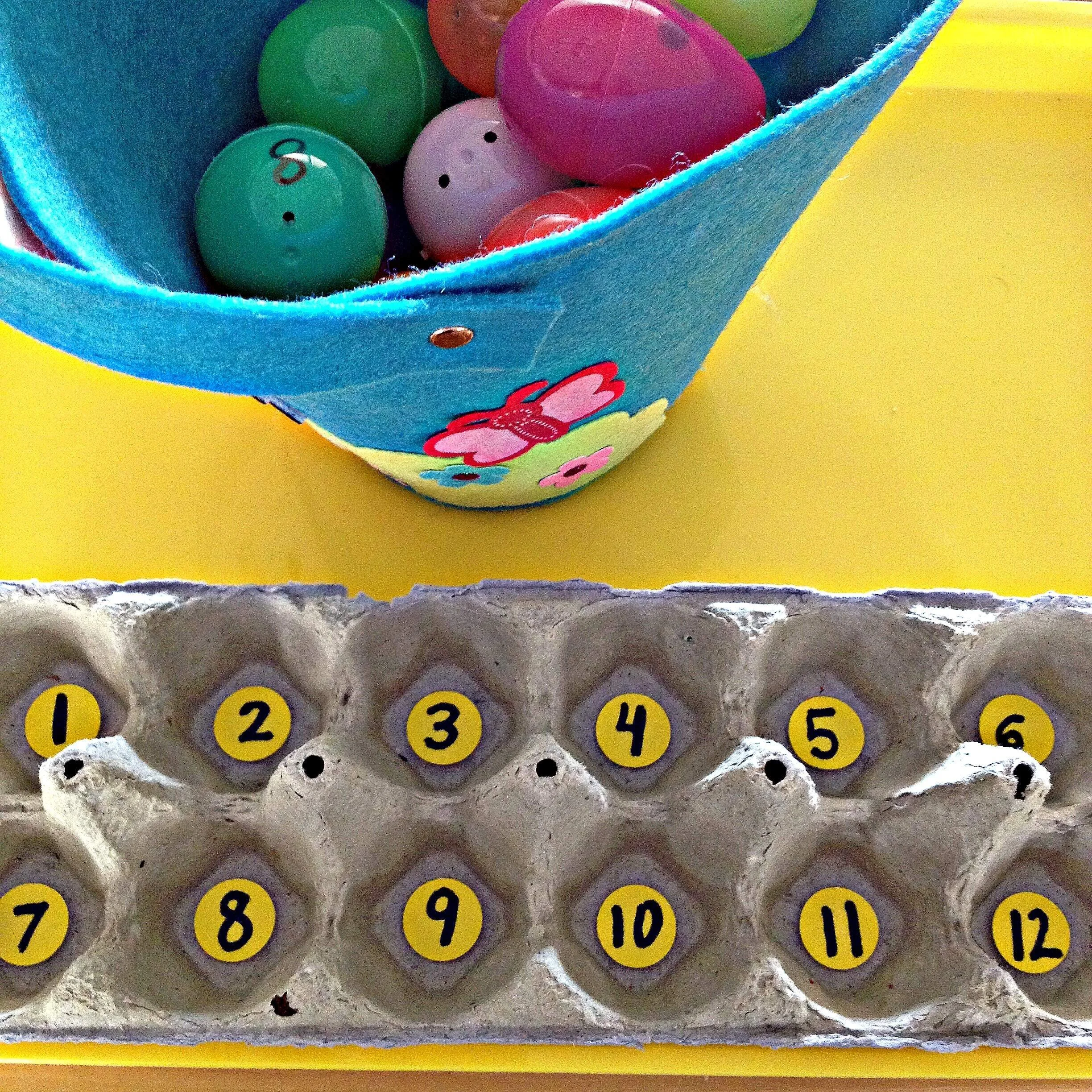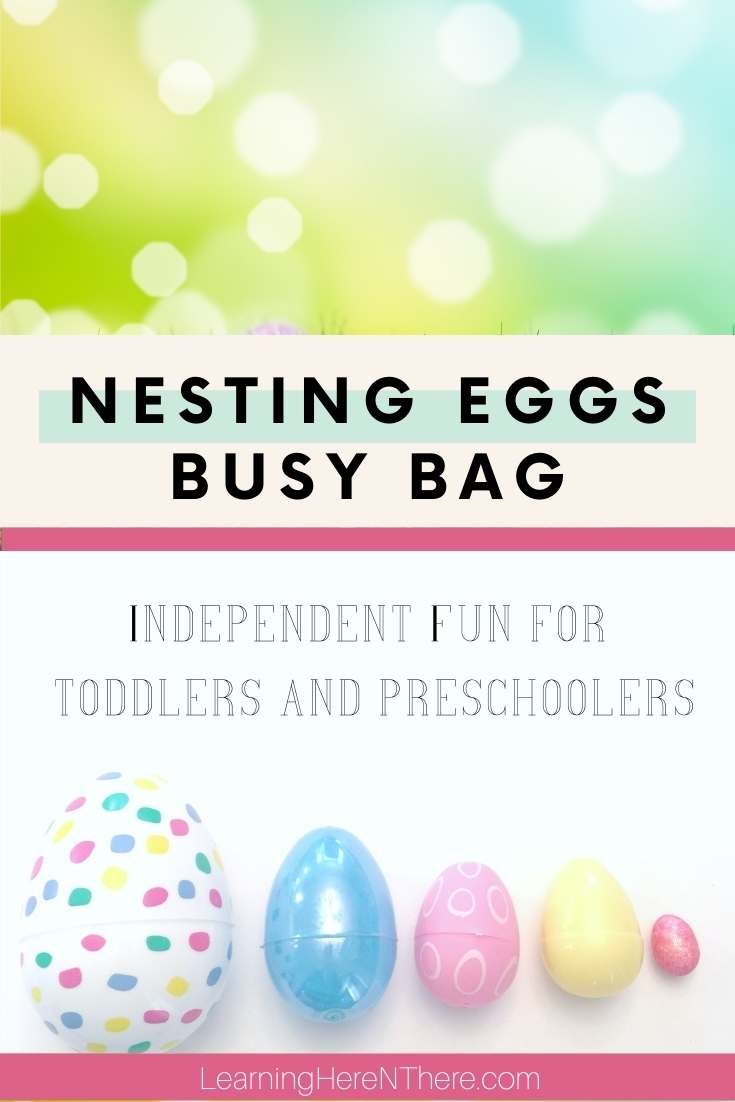Educational Ways to Play with Plastic Easter Eggs
I've discovered that kids of all ages love playing with plastic Easter eggs. Since the eggs only come out of the closet once a year, the novelty just doesn't wear off. I bring ours out early and we keep them out for almost a month after Easter. Here are some of the fun and educational ways we've come up with to play with those irresistible plastic Easter eggs.
These ideas can be used with toddlers, preschoolers, and even school-ae kids. Make changes to the activities as you see fit, and, as always, keep a close watch on children whenever using small items that could be considered choking hazards.
Educational Ways to Play with Plastic Eggs
1. Count them - Set up a simple counting activity with a basket of plastic Easter eggs. Or check out our Counting Eggs Activity.
2. Mix and Match - Before presenting this game to the child, mix up the colors of several plastic eggs by putting the top of one color with the bottom of another color. Then give the mixed up eggs to the child(ren) to take apart and match with its mate. (Really little kiddos will need help putting the eggs together.) To make this fun for older kids, have them do it while racing each other or racing against the clock. Or they can race you!
3. Sort by color - This is an easy activity to set up for young kids working on their colors. They can sort a bag of multi-colored plastic eggs into bowls, bags, or baskets based on the egg's color.
4. Directional Egg Hunt -This is just like the typical Easter egg hunt, but with verbal directional clues to guide them toward the hidden eggs. (This will help them practice their listening skills.) It's quick to set up and can be played with kids of ALL ages.
5. Guess what's inside - This activity is similar to my Five Senses Exploration Activity. Check it out to get a better idea of how to do it. But here’s the gist. Fill several eggs each with a different item - some noisy, some quite. (cotton balls, beans, marbles, paper clips, rice, etc...) Let the kids shake the egg to get a feel for its weight and the sound it makes. Then have the child guess what's inside. Open the egg to reveal the filling and repeat. (For younger kids, display the possible fillers on a tray to give them an idea of what might be inside.) Let older kids fill an egg to challenge you!
6. Make art - Show your child(ren) how to use one half of a plastic egg to use as a stamp. Dip it in some tempera paint and stamp away on a sheet of construction paper. Use different eggs with different colors. You can do this as free form art with no end product in mind, or you can use it to create something more like our Paper Easter Egg Garland.
7. Bocce - Show children how to gently roll an egg so that it ends up being the closest to (but not touching) a designated item (such as a bean bag, stuffed animal, or other soft item). This is great practice for fine and gross motor control.
8. Make music - Use dried beans to fill some plastic eggs and make shakers. Turn on some music and try to shake to the beat. Or just create your own beat. (You may want to tape or glue the eggs closed.)
9. Tic tac toe - Develop strategy-making skills with this classic game using two colors of plastic eggs. You can create the game board using painter's tape or just by drawing out large boards on construction/printer paper.
10. Make Nesting Eggs - Place eggs of different sizes one inside the next. Young kids will enjoy the discovery of opening one egg after another. See if they can nest them all back together. It takes more concentration than you think. Read more about it here.
Please note: Activities 2,3, and 10 above can be set up as busy bags for kids to work on independently. If you like using busy bags to save your sanity try these.
11. Tell a story- use markers and other craft supplies to create a character with one or more eggs. Then make up a story for the characters to act out.
12. Race them - fill a couple of eggs with different items (cotton balls, crumpled paper, marbles, etc...), then place them on one end of a slanted cookie sheet. Predict which will make it to the bottom of the slope first. Release them at the same time and see if the prediction came true. Repeat several times with a variety of different fillings and see if the child(ren) can find a pattern and fine tune predictions. Change the slope of the tray for added excitement.
For more fun educational play ideas, follow my Counting Activities and Easter for Kids boards on Pinterest.
Please share this list so others can join in the fun too.
The image below is Pinnable!
Thank you.








